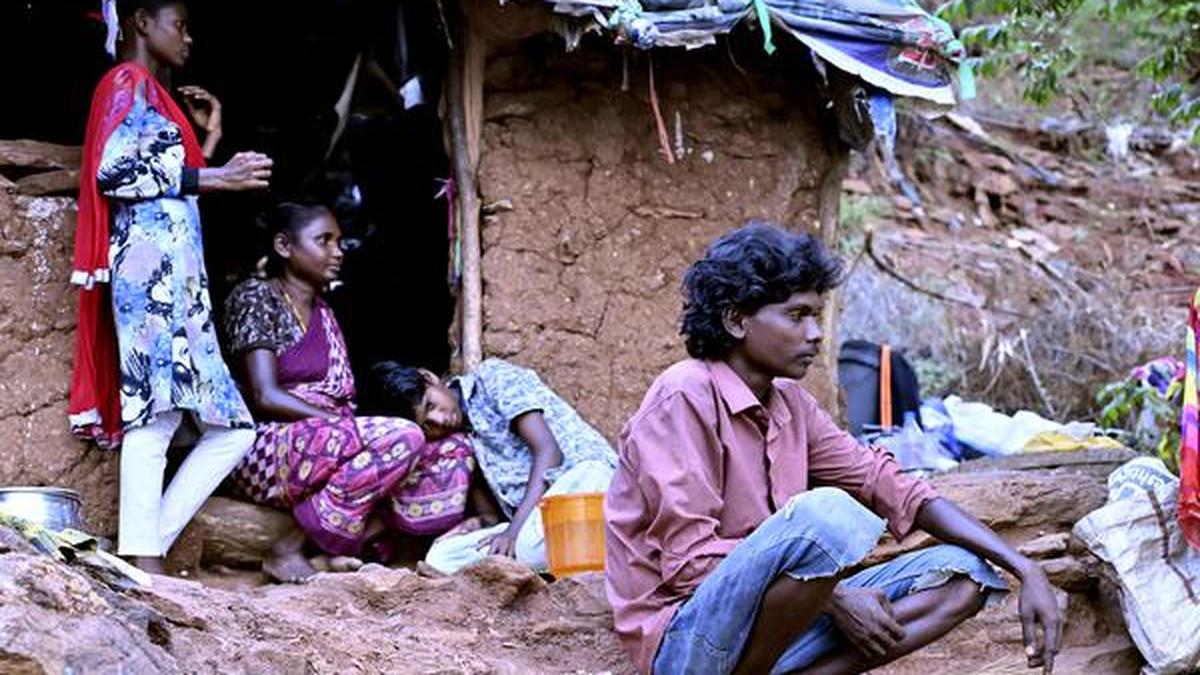
Prejudiced past and forsaken future: the DNTs’ battle for dignity Premium
The Hindu
Struggle for political representation and basic amenities faced by marginalized DNT communities in Andhra Pradesh highlighted in-depth.
“It is another world,” says P. Gangadhar Rao, gesturing towards the roughly 50 huts perched on a hill in Chitti Nagar of the Vijayawada West constituency in Andhra Pradesh. Seated on a small rock near one of the huts constructed by stacking bricks and covering them with a tarpaulin sheet, he gazes at the sprawling cityscape. Vijayawada, with its towering malls and modern apartments, is a picture of urbanisation and opportunity, in stark contrast to the world that he lives in.
In Gangadhar’s world, getting access to quality education, jobs or even basic amenities such as water and electricity is a constant struggle, with the primary focus often being on securing enough food for survival. This is the reality for the Yanadis and 58 other Denotified and Nomadic Tribes (DNTs) of the State. Until 1952, when these communities were denotified, they were branded criminals under the Criminal Tribes Act, 1871. They were later designated as Scheduled Castes, Scheduled Tribes, Backward Classes (BCs), and Minorities groups, with reservations and other measures to ensure equity.
The reason their situation continues to remain dire is because of the negligible political representation, both within the State and in the country, says M. Subba Rao, national president of DNT Political Front, a national-level organisation founded in 2004 striving for the political representation of the community. Though they were not enumerated in the Census 2011, Subba Rao guesstimates that 20 crore people across the country belong to DNT communities. In the State, there are around 60 lakh people in this category, he adds.
According to a report published by the National Commission for Denotified, Nomadic and Semi-Nomadic Tribes in 2008, there are 59 Denotified communities and 60 nomadic tribes in Andhra Pradesh.
The hill in Chitti Nagar has been home to around 350 Yanadis for over four decades. Around 3 lakh of the estimated 15 lakh population of the city lives on the hills. Those with more money occupy the lower part of the hills, while the socially and economically deprived communities move to the top. The houses can be reached by steps laid by the corporation. The Yanadis, who are looked down upon even by other downtrodden sections, occupy the top-most part of the hill. There are no pathways or steps to reach their dwellings.
“However, it is peaceful for us up here. We do not have to bother about what people say about us, our lifestyle, or our food choices,” says Gangadhar. He hesitates for a moment before adding: “We consume meat and alcohol every day.”
A strongly-built man, Gangadhar is president of the Yanadi Kulasthula Samkshema Sangham. He worked as a construction worker in Hyderabad for five years and moved here nearly six years ago. His worldly-wise tenor sets him apart from the other members of his community. His clothes look clean, unlike those of his neighbours that look unwashed and torn.











